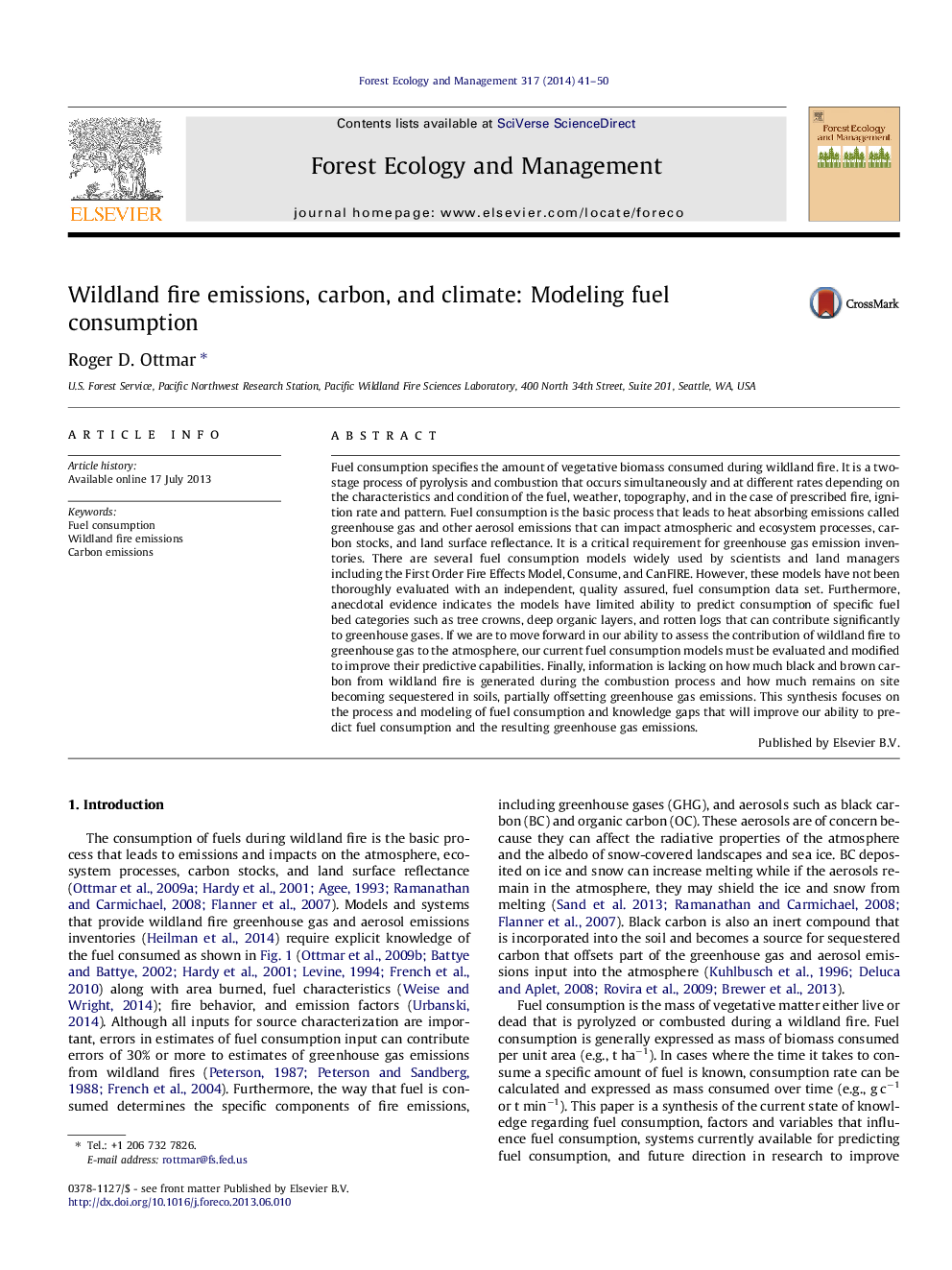| کد مقاله | کد نشریه | سال انتشار | مقاله انگلیسی | نسخه تمام متن |
|---|---|---|---|---|
| 86640 | 159201 | 2014 | 10 صفحه PDF | دانلود رایگان |
• Consumption of fuel generates greenhouse gas and particulate emissions.
• We preent a synthesis of wildland fire fuel consumption.
• Consume and FOFEM are two models to estimate fuel consumption.
• Improved consumption models are needed for crowns, duff layers, and rotten logs.
• Information is lacking on black carbon residue remaining following fire.
Fuel consumption specifies the amount of vegetative biomass consumed during wildland fire. It is a two-stage process of pyrolysis and combustion that occurs simultaneously and at different rates depending on the characteristics and condition of the fuel, weather, topography, and in the case of prescribed fire, ignition rate and pattern. Fuel consumption is the basic process that leads to heat absorbing emissions called greenhouse gas and other aerosol emissions that can impact atmospheric and ecosystem processes, carbon stocks, and land surface reflectance. It is a critical requirement for greenhouse gas emission inventories. There are several fuel consumption models widely used by scientists and land managers including the First Order Fire Effects Model, Consume, and CanFIRE. However, these models have not been thoroughly evaluated with an independent, quality assured, fuel consumption data set. Furthermore, anecdotal evidence indicates the models have limited ability to predict consumption of specific fuel bed categories such as tree crowns, deep organic layers, and rotten logs that can contribute significantly to greenhouse gases. If we are to move forward in our ability to assess the contribution of wildland fire to greenhouse gas to the atmosphere, our current fuel consumption models must be evaluated and modified to improve their predictive capabilities. Finally, information is lacking on how much black and brown carbon from wildland fire is generated during the combustion process and how much remains on site becoming sequestered in soils, partially offsetting greenhouse gas emissions. This synthesis focuses on the process and modeling of fuel consumption and knowledge gaps that will improve our ability to predict fuel consumption and the resulting greenhouse gas emissions.
Journal: Forest Ecology and Management - Volume 317, 1 April 2014, Pages 41–50
